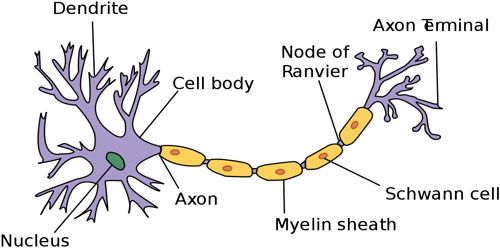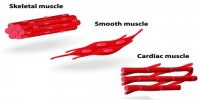The Nerve Tissue:
Structural Characteristics: The particular type of tissue, which forms the nervous system, is called nerve tissue. Receiving stimulus from the environment, the nerve tissue transmits it within the body and accordingly appropriate responses are created. The special type of cell which forms the nerve tissue is called nerve cell or neuron (Figure). So a neuron is the structural and functional unit of the nervous system. It is ectodermal in origin.
Neuron or nerve cells can receive various types of external and internal stimuli or nerve-sensation and can transmit those inside the body.

Structure of a Neuron: A mature neuron has two parts. These are:
Cell body: The cell body is generally polygonal and nucleated. The cytoplasm of the cell contains mitochondria, golgibody, ribosome, endoplasmic reticulum etc. But as there is no active centriole in the cytoplasm of the neuron, the neuron cannot divide.
Function: Originating from the cell body, two or more branches transmit stimuli or nerve impulse to the neuron’s cell body. Generally, they are one or several in numbers and present opposite to the axon.
Axon: From the neuron’s cell body a long fibre branch carries nerve impulse towards dendrite of the next neuron. A neuron has only one axon. It is called synapse. Through the synapse stimuli of a nerve is transmitted from one neuron to another.
Location: Nerve tissues are located within the nervous system. There are innumerable neurons is the nerve tissue of any animal.
Function:
- To receive stimuli and create the proper sensation.
- To store memory in higher animals.
- To control the works of different organs of the body and coordinate their activities.















